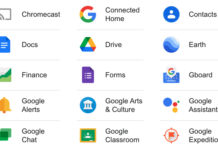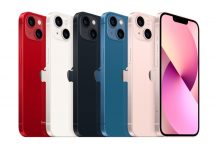
Samsung has introduced three new mid-range smartphones in its Galaxy A lineup, which include the A20, A50 and A70, all available now.
Usually, the company’s phones get more headlines for the premium models it launches, but this trio is decidedly more affordable. To try and avoid cutting too many features out of the mix for all of them, some of the components are designed to be robust and efficient. That includes the screen, camera and chipset, to name a few.

Similar design
The design philosophy is entirely iterative throughout. Stack these three next to each other and you see the physical differences are fairly minor. Both the A20 and A50 have 6.4-inch Super AMOLED displays, albeit with a resolution difference. The A20 is only 720p HD (1560 x 720), while the A50 is 1080p HD (2340 x 1080). The A70 is a little bigger with a 6.7-inch Super AMOLED with a slightly longer resolution (2400 x 1080).
Samsung went with one of its own Exynos processors for the A20 and A50, and Qualcomm’s Snapdragon 675 for the A70. All of those are firmly in line with mid-range phones, so hardly a surprise.
They vary on internal storage, with the A20 only at 32GB, A50 at 64GB and A70 at 128GB. Each phone has a microSD card slot to expand on those numbers, all the way up to 512GB. RAM also differs with 3GB (A20), 4GB (A50) and 6GB (A70).
They each have large batteries, and coupled with smaller screen resolutions and less taxing processors, should amount to long stretches between charges. The A20 and A50 both have 4000mAh batteries, while the larger A70 has a 4500mAh one packed in. On premium phones, batteries like that would be solid, but on mid-range handsets, they should keep the lights on far longer.

How the A20, A50 and A70 feel
Like other non-premium Samsung devices, these are made using what the company calls, “3D Glasstic.” In other words, it’s a plastic blend that has been specially treated to look and feel like real glass. At first glance, you won’t notice a difference, except that the Glasstic material doesn’t reflect as much as real glass does.
There is a colour treatment that shows depending on how you tilt the device. It looks like something of a prism effect, and is pretty neat, though not dramatic. The phones are lightweight and feel higher-end than they actually are. Double or triple-camera arrays in the back and onscreen fingerprint sensor only add to the flair Samsung was going for. The one exception is the A20, which has an optical fingerprint sensor in the rear. Also, the other two have optical sensors in-screen, not the ultrasonic type in the Galaxy S10/S10+.

Camera features
It’s too early to say how well these phones will shoot, but Samsung has tried to equip them with the right tools. The A70 has three lenses, starting with the standard 32-megapixel lens, plus the 8-megapixel ultra-wide and 5-megapixel depth sensor.
It appears the A50 has the same specs, save for a smaller 25-megapixel sensor for the standard lens. The A20 has a dual-lens layout with a different 13-megapixel image sensor for the standard lens, and a 5-megapixel one for ultra-wide.
Samsung will be using the same camera software from its Galaxy S10 phones, but some things are missing. There is no Instagram mode, nor the new Night mode the company released. You also can’t shoot video in 4K or Super Slo-Mo. Scene Optimizer, the AI for recognizing scenes when you shoot them is available to use. Live focus, Hyperlapse and Pro are also in there.
Available now
I will be reviewing the Galaxy A50, in particular, for the blog, but if you want to get your hands on any of these three, you can. They have just launched and you can see them firsthand yourself. The A20 and A70 will only come in black, while the A50 will come in black or white.



